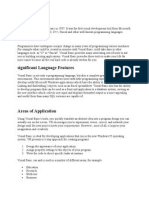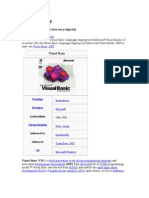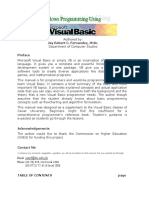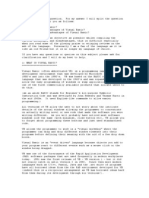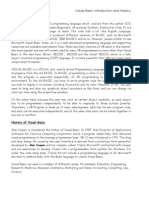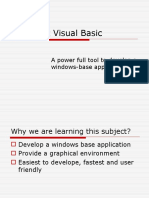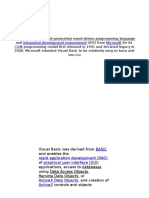Reviewer: Introduction to Visual Basic
Introduction
Visual Basic (VB) is an event-driven programming language and Integrated Development Environment
(IDE) developed by Microsoft. It was designed to be user-friendly and easy to learn, derived from
BASIC (Beginners All-Purpose Symbolic Instruction Code). VB enables rapid application development
(RAD) of graphical user interfaces, database access, and the creation of ActiveX controls and objects.
Brief History of Visual Basic
• VB 1.0 (1991): First release for Windows.
• VB 2.0 (1992): Improved environment and speed, forms became core objects.
• VB 3.0 (1993): Added Jet Database Engine, Crystal Reports.
• VB 4.0 (1995): Supported 32-bit programs, allowed non-GUI classes.
• VB 5.0 (1997): Exclusively for 32-bit Windows.
• VB 6.0 (1998): Most successful version, supported web-based apps.
• VB .NET (2002): Rebuilt with .NET Framework integration.
• VB 2003: Added mobile programming tools, XML features.
• VB 2005: Dropped '.NET' in name, introduced My namespace, improved data binding.
• VB 2008: Added LINQ, Lambda expressions, XML literals.
• VB 2010: Full Object-Oriented Programming support.
Integrated Development Environment (IDE)
The Visual Basic IDE includes tools and features to create, run, and test programs. It integrates
multiple languages including Visual C++, Visual C#, and Visual F#. Windows applications consist of
solutions, projects, and files, where a solution is a container for multiple projects.
Applications of Visual Basic
• Windows-based applications: GUI programs that run on personal computers.
• Web-based applications: Programs with a web interface, run on servers, accessed via browsers.
